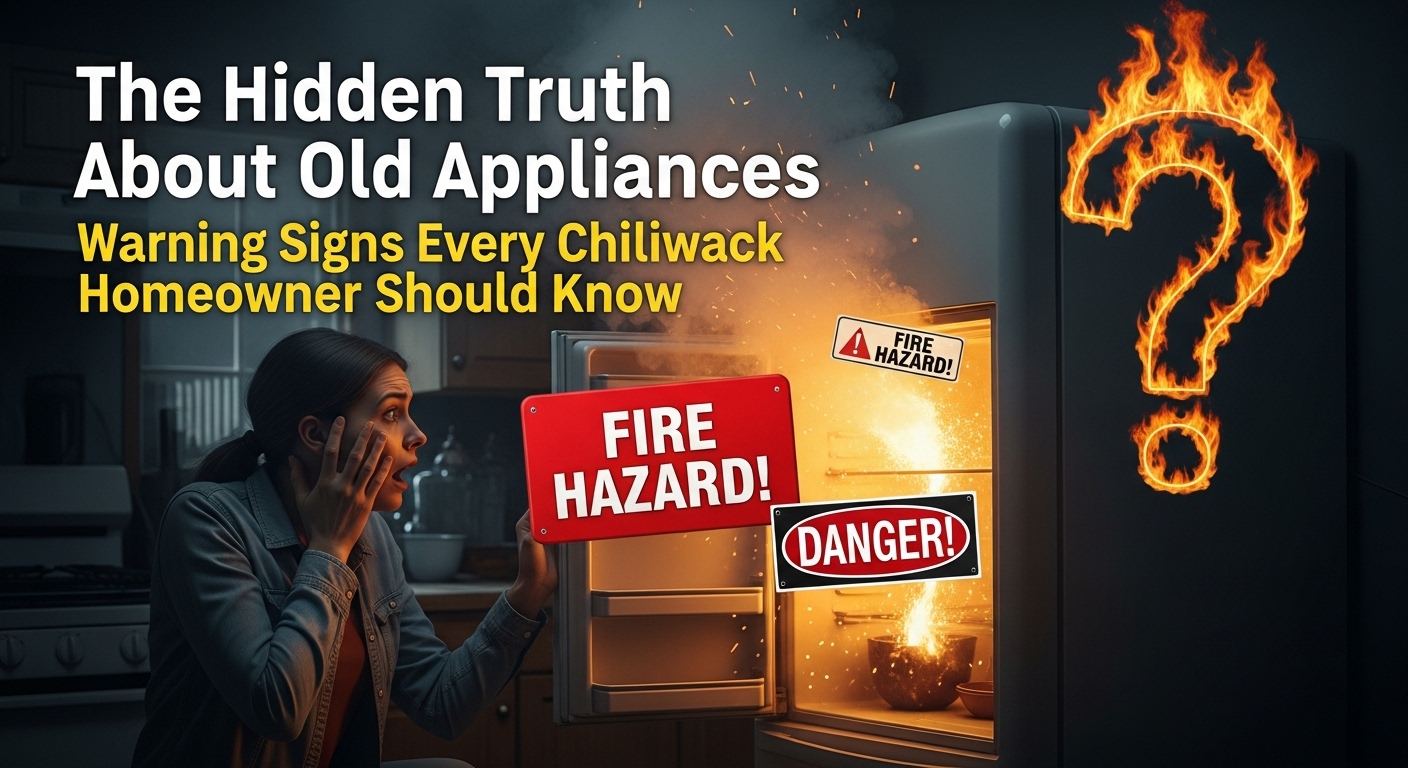Wondering if your older appliances could be ticking fire hazards waiting to explode? We’re diving deep into the scary truth about when household appliances become dangerous, plus all the warning signs every Chiliwack homeowner needs to spot before disaster strikes. Picture this: you’re cozied up watching Netflix when suddenly you smell something burning. Your heart drops as you realize it’s coming from that ancient washing machine in the basement—the one you’ve been meaning to replace for years but kept putting off because “it still works.” Sound familiar? As someone who’s seen way too many preventable appliance fires in our beautiful Chiliwack community, I’m here to spill the tea on when your trusty household helpers turn into potential fire starters. 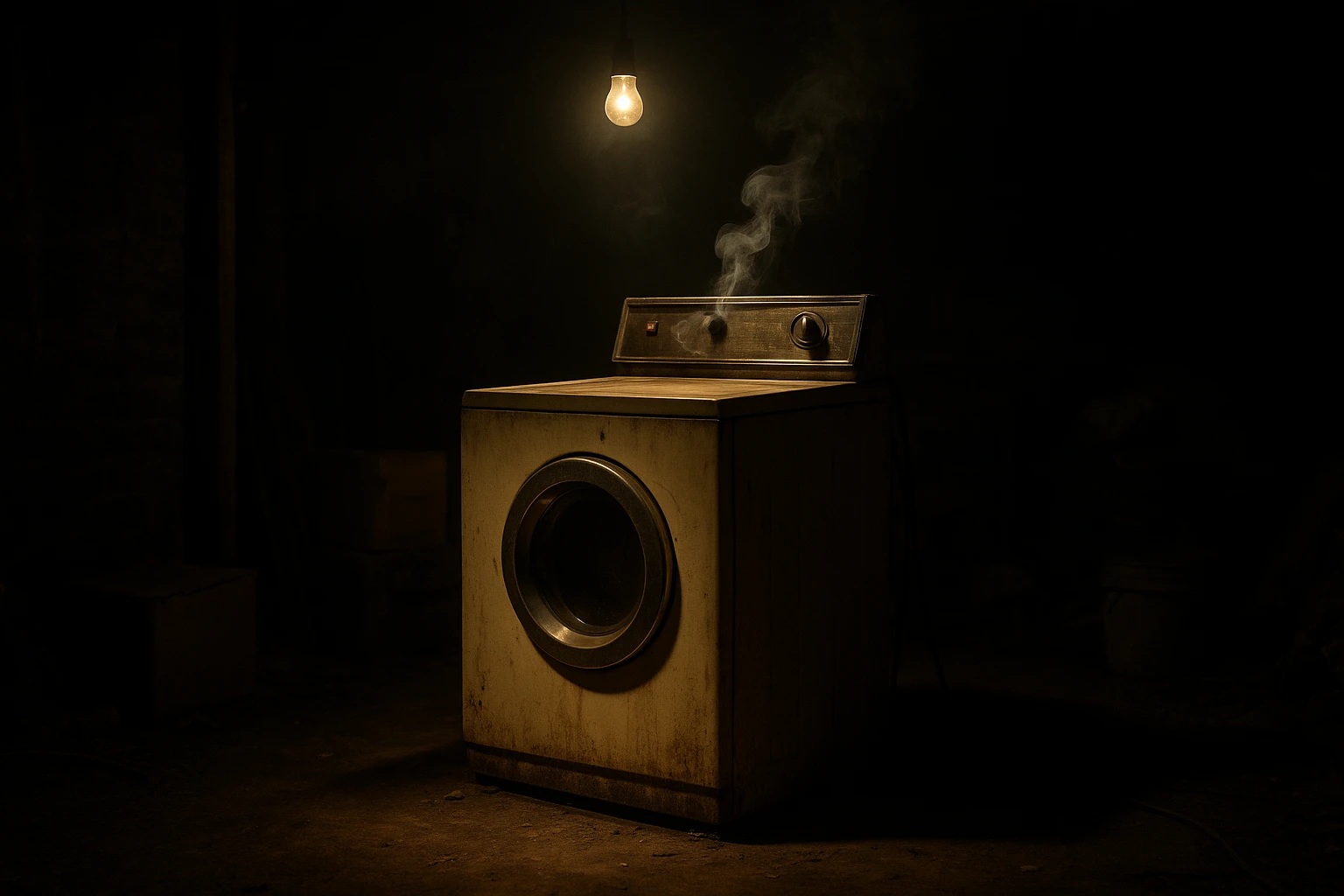 The reality is that our homes are filled with electrical appliances that we use daily without a second thought. But here’s the thing—these machines have lifespans, and when they start breaking down or showing their age, they can become serious safety hazards. From overheating dryers to faulty refrigerator compressors, the appliances we depend on most can quickly become the biggest threats to our family’s safety. The good news? Most of these fires are totally preventable when you know what warning signs to watch for.
The reality is that our homes are filled with electrical appliances that we use daily without a second thought. But here’s the thing—these machines have lifespans, and when they start breaking down or showing their age, they can become serious safety hazards. From overheating dryers to faulty refrigerator compressors, the appliances we depend on most can quickly become the biggest threats to our family’s safety. The good news? Most of these fires are totally preventable when you know what warning signs to watch for.
Key Outtakes:
- Electrical appliances cause approximately 24,200 residential fires annually, resulting in 295 deaths and over $1.2 billion in property damage
- Failure to clean appliances like dryers accounts for 31% of appliance-related fires, making maintenance crucial for fire prevention
- Older homes built before 1973 are at higher risk since their electrical systems weren’t designed for today’s high-powered appliances
- Warning signs include burning smells, unusual sounds, overheating, and frequently tripping circuit breakers
- Professional appliance disposal and timely repairs can prevent most appliance-related fires before they start
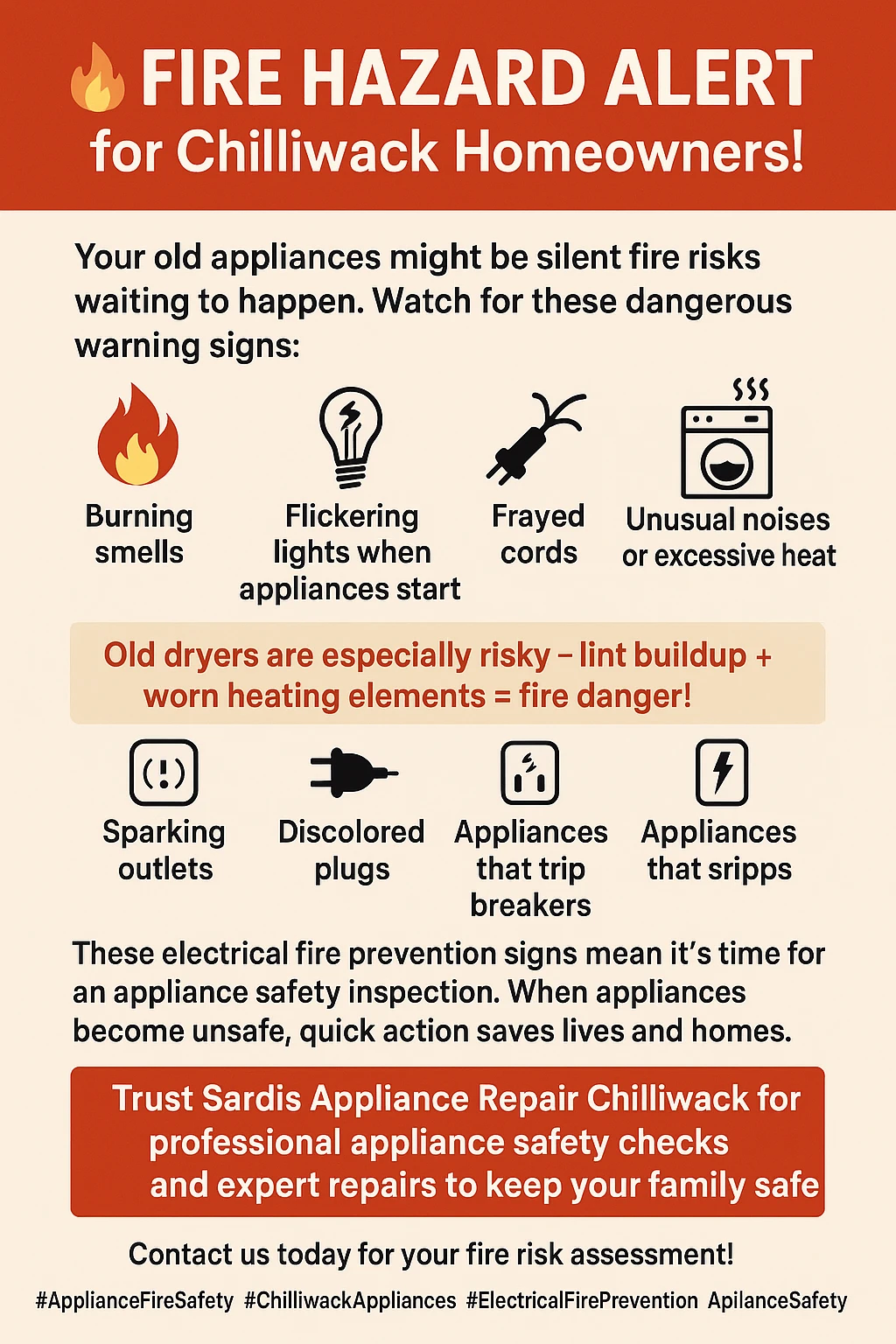
When Everyday Appliances Become Fire Hazards
Let’s get real about something most of us don’t want to think about—our beloved appliances can literally catch fire and burn down our homes. It sounds dramatic, but the numbers don’t lie. Every year, thousands of families lose everything because of preventable appliance fires, and it’s happening way more than you’d expect right here in BC. 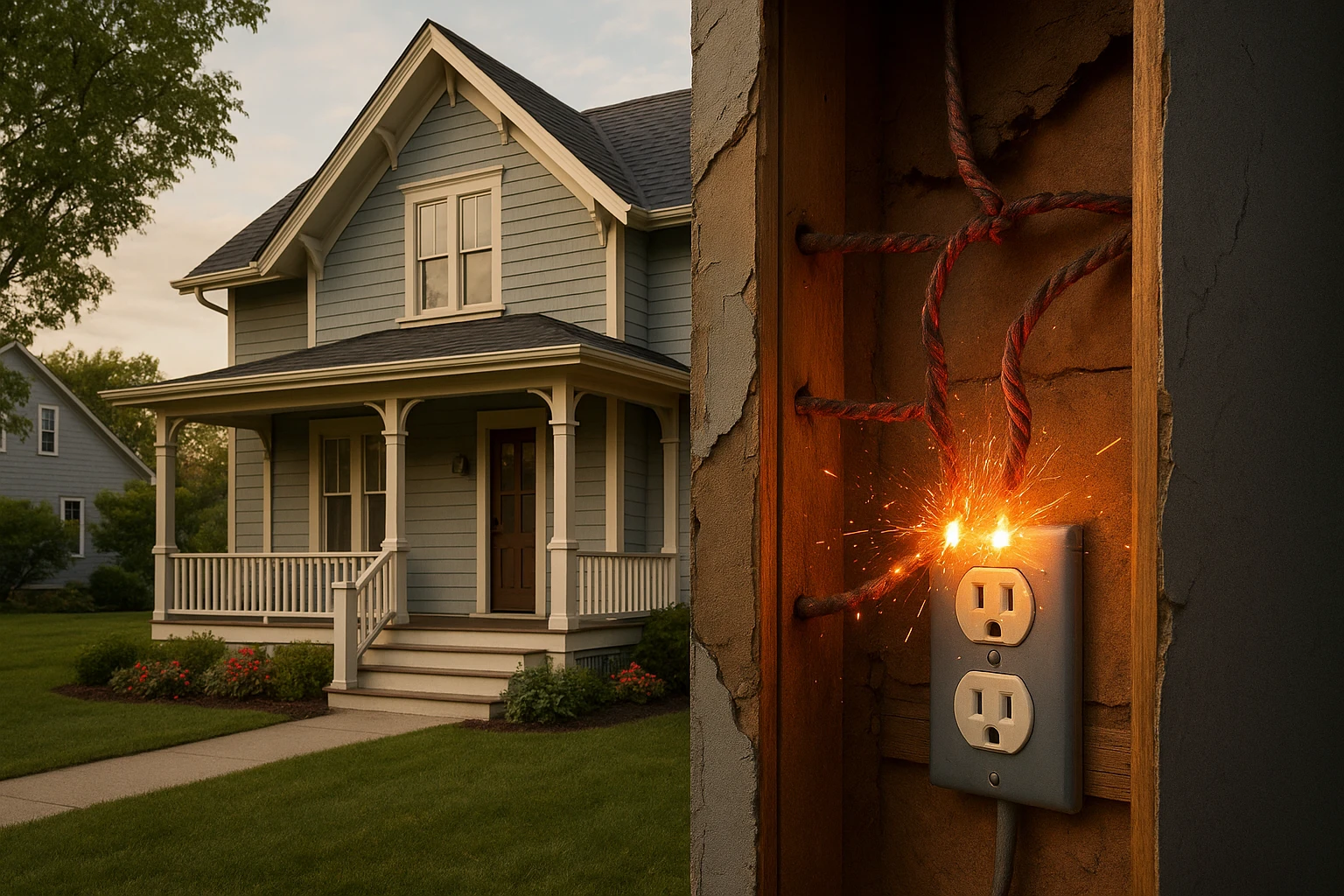 The scariest part? These fires often start in places we can’t see, like behind walls or in basements, giving them precious time to spread before anyone notices. Unlike a stovetop fire that happens right in front of you, an electrical fire from a malfunctioning dryer or refrigerator can smolder for hours, filling your home with toxic smoke while you sleep. By the time most people realize what’s happening, the fire has already caused significant damage to both the structure and contents of their home. What makes this even more concerning is that many of these appliance fires happen in older homes—and let’s be honest, Chilliwack has plenty of those charming heritage houses built decades ago. These homes weren’t designed to handle the electrical demands of modern appliances like massive fridges, high-efficiency washers, and powerful microwaves. When you plug today’s energy-hungry appliances into yesterday’s electrical systems, you’re essentially playing with fire.
The scariest part? These fires often start in places we can’t see, like behind walls or in basements, giving them precious time to spread before anyone notices. Unlike a stovetop fire that happens right in front of you, an electrical fire from a malfunctioning dryer or refrigerator can smolder for hours, filling your home with toxic smoke while you sleep. By the time most people realize what’s happening, the fire has already caused significant damage to both the structure and contents of their home. What makes this even more concerning is that many of these appliance fires happen in older homes—and let’s be honest, Chilliwack has plenty of those charming heritage houses built decades ago. These homes weren’t designed to handle the electrical demands of modern appliances like massive fridges, high-efficiency washers, and powerful microwaves. When you plug today’s energy-hungry appliances into yesterday’s electrical systems, you’re essentially playing with fire.
The Hidden Dangers Lurking in Your Appliances
Now that we’ve established that appliance fires are a real threat, let’s dig into what actually makes these everyday machines so dangerous. Understanding the science behind these fires will help you spot problems before they become disasters, and trust me, your future self will thank you for paying attention to this stuff. Most appliance fires start with electrical malfunctions that create what experts call “arc faults.” Think of an arc fault like a tiny lightning bolt jumping between electrical components inside your appliance. These sparks happen when electricity takes an unintended path due to damaged wiring, loose connections, or worn insulation. When these electrical arcs occur near flammable materials like plastic components or dust buildup, they can ignite faster than you can say “house fire.” The problem is that these arc faults can happen completely invisibly inside your appliances, making them nearly impossible to detect until it’s too late. The materials used in many appliances make the fire risk even worse. Most modern appliances contain lots of plastic components that act like fuel for fires. When these plastics heat up and start burning, they release toxic fumes and help the fire spread rapidly throughout the appliance and beyond. Older appliances are especially dangerous because their plastic components may not meet current fire safety standards, and years of heat exposure can make these materials even more flammable. Another major fire risk comes from the combination of heat, electricity, and accumulated debris that you’ll find in most household appliances. Take your dryer, for example—it generates intense heat to dry your clothes, uses powerful electrical components to run the motor and heating elements, and constantly accumulates lint that’s basically tinder waiting for a spark. When you add poor maintenance into this mix, you’ve got a perfect storm for a house fire. The electrical components themselves also pose risks as they age. Motors, heating elements, and control circuits all generate heat during normal operation, but as these parts wear out, they can start overheating or drawing too much electrical current. This extra heat and electrical stress can cause components to fail catastrophically, often resulting in sparks, flames, or both. What makes this particularly dangerous is that these failures often happen suddenly, giving you little warning that something’s wrong. Finally, many appliances contain flammable liquids or gases that can make fires spread faster and burn hotter. Refrigerants in fridges and air conditioners, oils in some heating systems, and even the grease that accumulates in kitchen appliances can all act as accelerants if a fire starts. When these substances catch fire, they burn much more intensely than regular materials, making the fires harder to extinguish and more likely to spread to other parts of your home.
Warning Signs Every Chiliwack Homeowner Should Know
Here’s where things get practical—I’m about to share the warning signs that could literally save your home and family. These aren’t subtle hints that something might be wrong eventually; these are red flags screaming that you need to take action immediately. Learning to recognize these signs is like having a superpower that protects your most valuable assets. 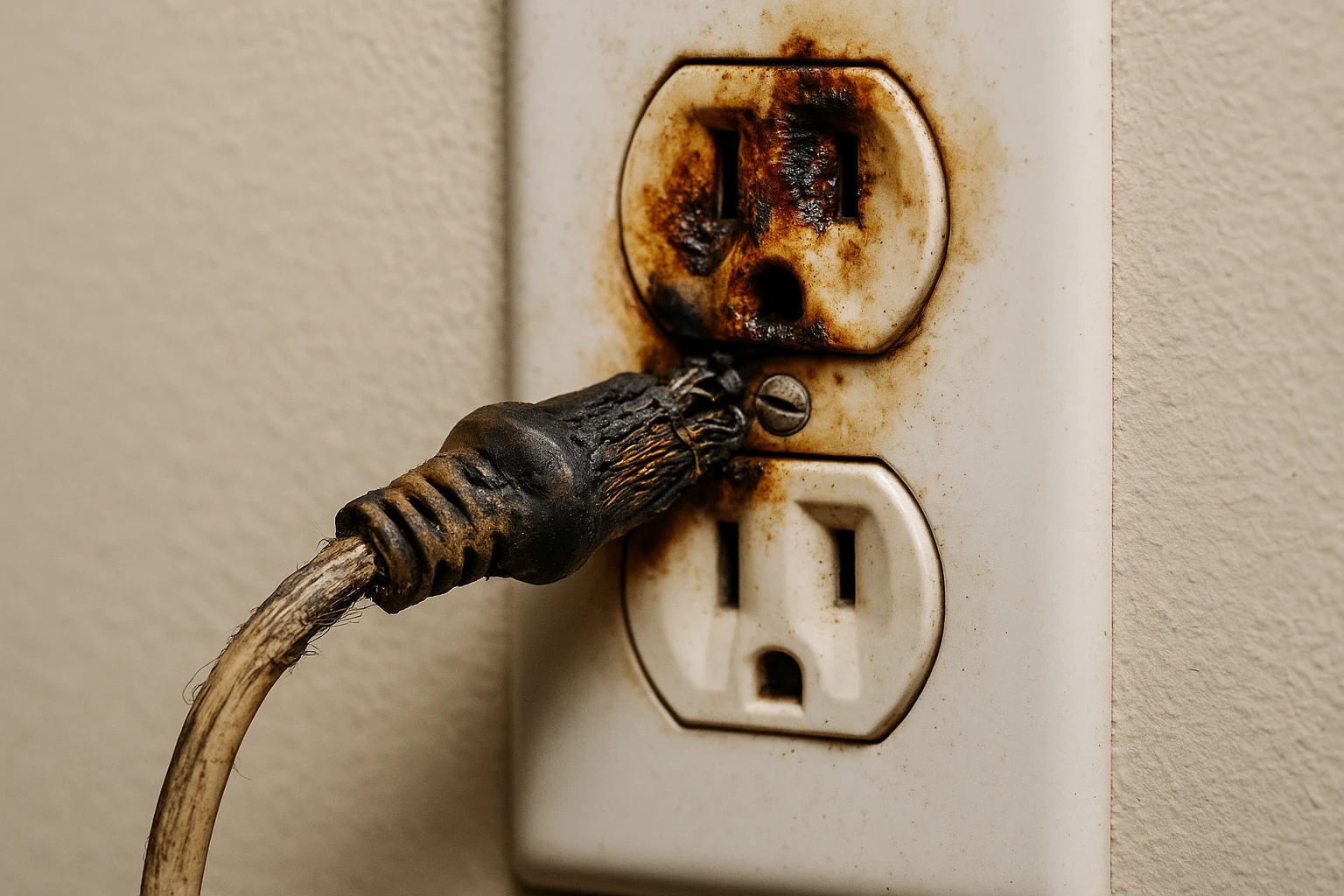 The most obvious warning sign is when you smell something burning, but it’s not as simple as just sniffing around. Electrical fires have a very distinct smell—it’s sharp, acrid, and unmistakable once you know what to look for. It’s different from the smell of burnt food or wood; electrical fires smell like burning plastic mixed with a metallic tang that hits the back of your throat. If you notice this smell and can’t immediately identify a safe source, start checking your appliances one by one. Don’t ignore it or assume it will go away—that burning smell is your nose detecting the chemical breakdown of electrical components or plastic materials in your appliances. Strange sounds from your appliances are another major red flag that many people ignore or dismiss as normal aging. But here’s the thing—appliances shouldn’t make weird noises. If your washing machine suddenly starts making grinding sounds, your refrigerator begins buzzing loudly, or your dryer starts squealing, these are signs that internal components are failing. These failing parts often create the exact conditions that lead to electrical fires: increased friction, excessive heat, and electrical arcing. What sounds like a minor annoyance today could be the early stages of a catastrophic failure tomorrow. Visual signs are often the easiest to spot but the most frequently overlooked. Check your appliances regularly for scorch marks, discolored areas, or melted plastic around electrical connections and outlets. These marks are literally evidence that dangerous overheating has already occurred. Also watch for outlets that have become warm or hot to the touch—this indicates that too much current is flowing through the electrical connection, which can easily lead to a fire. Plugs that feel loose in outlets or outlets where plugs don’t fit snugly are also dangerous because loose connections create resistance, which generates heat. Your home’s electrical system will often give you early warnings about appliance problems through the circuit breakers and fuses. If you’re constantly resetting tripped breakers or replacing blown fuses, especially ones connected to specific appliances, this is a clear sign that something is drawing too much power or creating electrical faults. Don’t just keep resetting the breaker—investigate why it’s tripping. Similarly, if lights dim when certain appliances turn on, or if you experience frequent power fluctuations, these could indicate that your electrical system is struggling to handle the load from aging or malfunctioning appliances. The performance of your appliances themselves can also signal fire risks. Appliances that are running hotter than usual, cycling on and off frequently, or not performing as efficiently as they used to may be experiencing internal component failures. For example, a refrigerator that runs constantly or gets unusually warm on the outside could have a failing compressor that’s overheating. A dryer that takes much longer to dry clothes might have restricted airflow that’s causing the motor and heating element to overheat.
The most obvious warning sign is when you smell something burning, but it’s not as simple as just sniffing around. Electrical fires have a very distinct smell—it’s sharp, acrid, and unmistakable once you know what to look for. It’s different from the smell of burnt food or wood; electrical fires smell like burning plastic mixed with a metallic tang that hits the back of your throat. If you notice this smell and can’t immediately identify a safe source, start checking your appliances one by one. Don’t ignore it or assume it will go away—that burning smell is your nose detecting the chemical breakdown of electrical components or plastic materials in your appliances. Strange sounds from your appliances are another major red flag that many people ignore or dismiss as normal aging. But here’s the thing—appliances shouldn’t make weird noises. If your washing machine suddenly starts making grinding sounds, your refrigerator begins buzzing loudly, or your dryer starts squealing, these are signs that internal components are failing. These failing parts often create the exact conditions that lead to electrical fires: increased friction, excessive heat, and electrical arcing. What sounds like a minor annoyance today could be the early stages of a catastrophic failure tomorrow. Visual signs are often the easiest to spot but the most frequently overlooked. Check your appliances regularly for scorch marks, discolored areas, or melted plastic around electrical connections and outlets. These marks are literally evidence that dangerous overheating has already occurred. Also watch for outlets that have become warm or hot to the touch—this indicates that too much current is flowing through the electrical connection, which can easily lead to a fire. Plugs that feel loose in outlets or outlets where plugs don’t fit snugly are also dangerous because loose connections create resistance, which generates heat. Your home’s electrical system will often give you early warnings about appliance problems through the circuit breakers and fuses. If you’re constantly resetting tripped breakers or replacing blown fuses, especially ones connected to specific appliances, this is a clear sign that something is drawing too much power or creating electrical faults. Don’t just keep resetting the breaker—investigate why it’s tripping. Similarly, if lights dim when certain appliances turn on, or if you experience frequent power fluctuations, these could indicate that your electrical system is struggling to handle the load from aging or malfunctioning appliances. The performance of your appliances themselves can also signal fire risks. Appliances that are running hotter than usual, cycling on and off frequently, or not performing as efficiently as they used to may be experiencing internal component failures. For example, a refrigerator that runs constantly or gets unusually warm on the outside could have a failing compressor that’s overheating. A dryer that takes much longer to dry clothes might have restricted airflow that’s causing the motor and heating element to overheat.
Frequently Asked Questions About Appliance Fire Safety
How often should I replace my major appliances?
Most major appliances have a lifespan of 10-15 years. It’s wise to consider replacing them once they pass the 10-year mark, especially if they start requiring frequent repairs.
What’s the most important maintenance task to prevent appliance fires?
For dryers, cleaning the lint trap after every use and having the vent professionally cleaned annually is crucial. For other appliances, regular cleaning and ensuring they have adequate ventilation can prevent overheating.
Is it worth repairing an old appliance, or should I just replace it?
If an appliance is over 10 years old and the repair cost is more than 50% of the price of a new one, replacement is usually the safer and more cost-effective option. An old, repaired appliance can still pose a fire risk due to aging internal components.
What should I do if I suspect an appliance is a fire hazard?
Unplug it immediately. Do not use it again until it has been inspected by a qualified appliance repair technician. If you smell burning or see smoke, evacuate your home and call 911 from a safe location.
Wrapping Up: Protecting Your Home from Appliance Fires
Your family’s safety is priceless, and being proactive about appliance maintenance is one of the most important things you can do to protect your home. Don’t wait for a burning smell or a tripped breaker to become a full-blown emergency. Regularly inspect your appliances, know the warning signs of electrical trouble, and don’t hesitate to call in the professionals when something seems off. By replacing aging appliances and addressing potential hazards early, you can ensure your Chiliwack home remains a safe haven for years to come.
 (604) 305-2992
(604) 305-2992 
 Schedule An Appointment
Schedule An Appointment 
